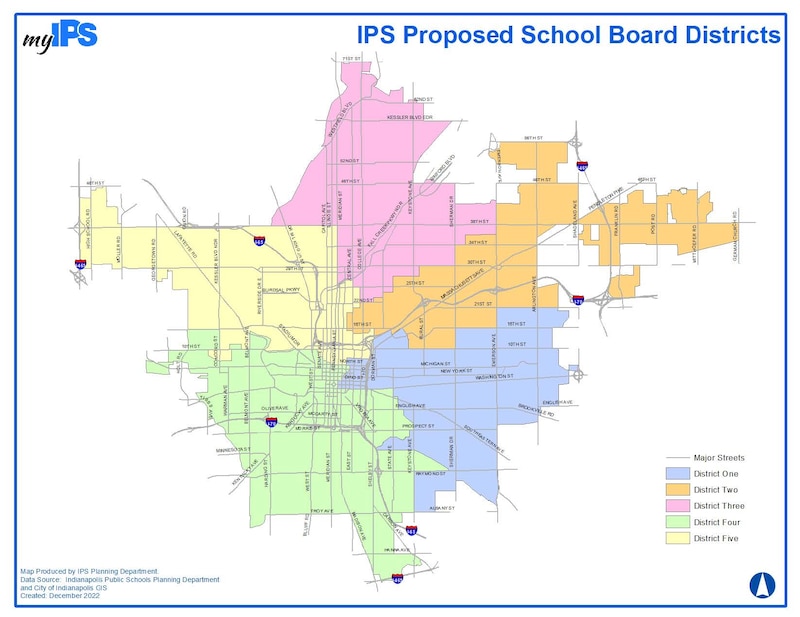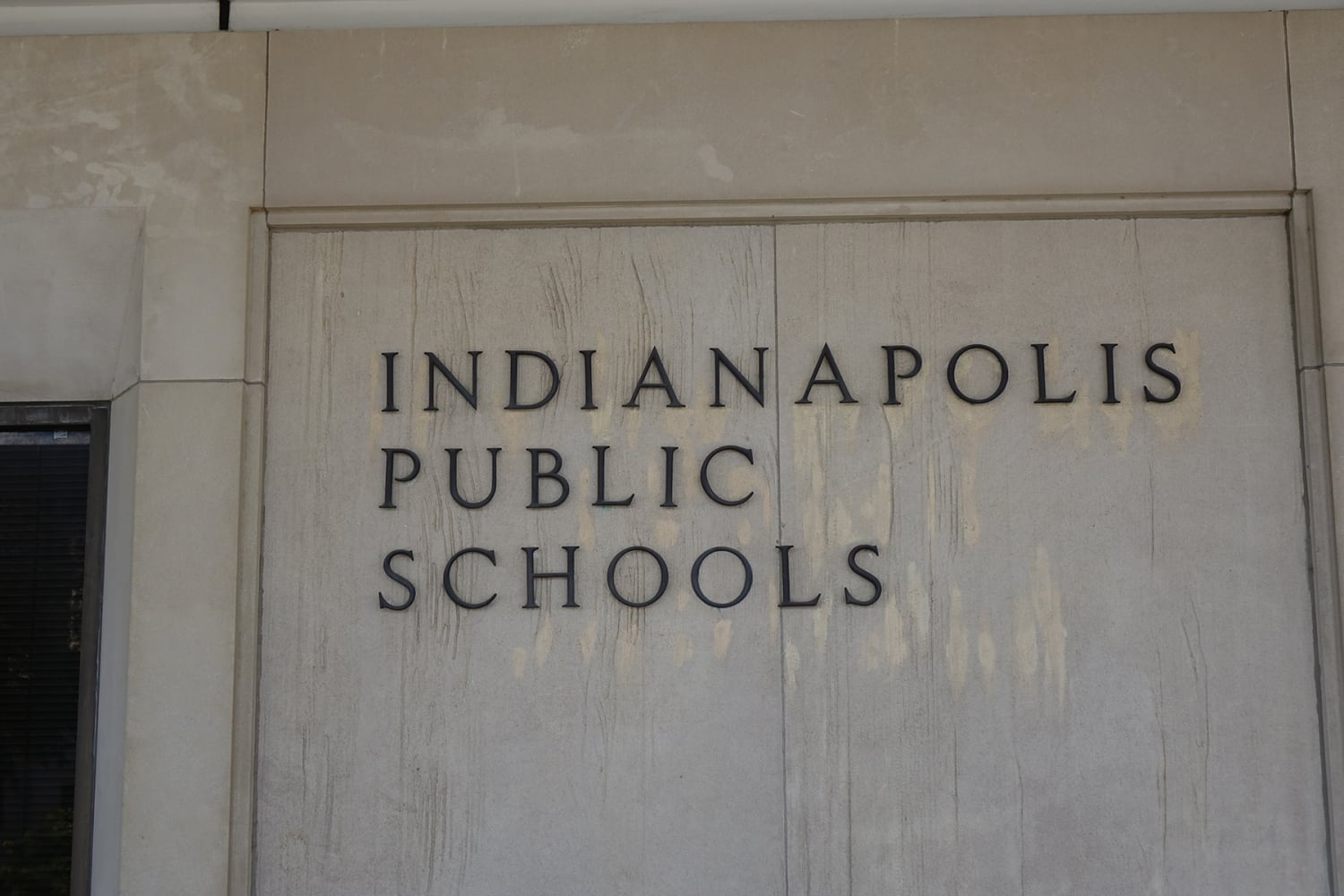Update, Oct 7, 2024: The map of districts for IPS school board has since been updated after Mirror Indy found an error. See the corrected map here.
The districts that Indianapolis Public Schools commissioners represent have changed ahead of the 2024 elections.
The IPS Board of Commissioners approved a new district map at their December meeting, ensuring that the populations of those districts are as equal as possible as required by state law. Per a presentation to the board, no school building switched districts and no commissioners were displaced from their districts.
The IPS school board has seven members, with five representing specific geographic districts and two occupying at-large seats. In 2024, District 1, District 2, District 4, and an at-large seat are on the ballot.
The changes are largely in the middle of the city and include a portion of downtown shifting to District 4, parts of Martindale-Brightwood moving to District 3, and changes along the boundary between Districts 1 and 2 on the east side of the city.

Throughout the process, the aim was to minimize changes for voters and to keep neighborhood boundaries as intact as possible, said Tim Moriarty of the law firm Faegre Drinker Biddle & Reath, who was part of the team that worked on the new district map. (While it is up to the board to establish the boundaries, the IPS board members did not directly participate in adjusting the boundaries.)
Changing the district map keeps IPS in compliance with state law that says it is up to school boards to establish the boundaries of the districts members represent, and those districts are evaluated after each federal decennial census to make sure the largest district is no more than 5% bigger than the smallest.
Under the previous district map, that gap was nearly 13,000 residents, or a 21% difference, Moriarty told the school board. That disparity prompted the changes to the map.
Normally, IPS would have changed its district map in 2021. But due to “administrative delays caused by the pandemic,” lawmakers extended the deadline for redistricting to Dec. 31, 2022, according to Moriarty’s presentation.
Not every school board goes through this process, only those that have seats where a member lives in and represents a specific district. Some boards have all at-large members who represent everyone, or have members who are required to live in a specific district even though all voters can vote for them.
The board will file the new districts with the Marion County Clerk and Marion County Election Board by Dec. 23.
MJ Slaby is the bureau chief for Chalkbeat Indiana. Contact MJ at mslaby@chalkbeat.org.






